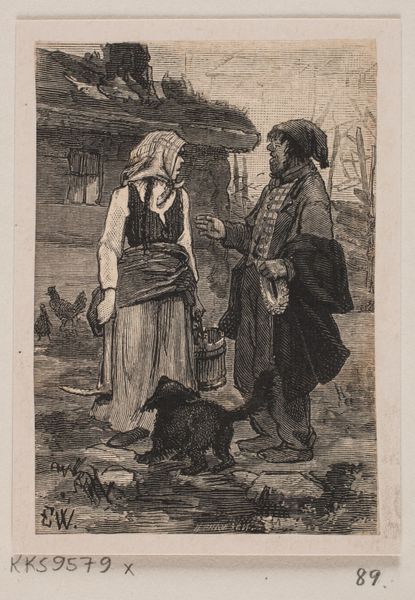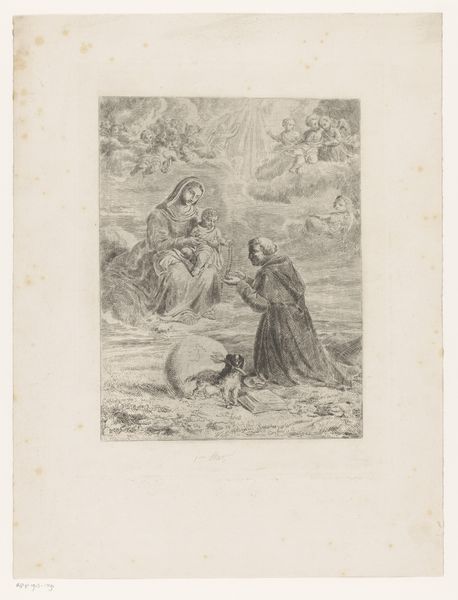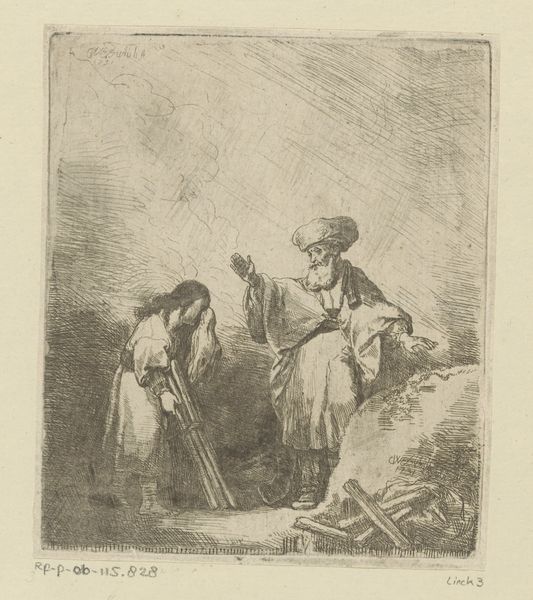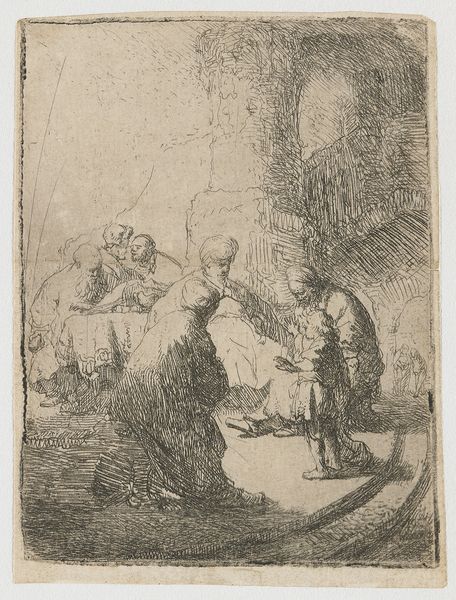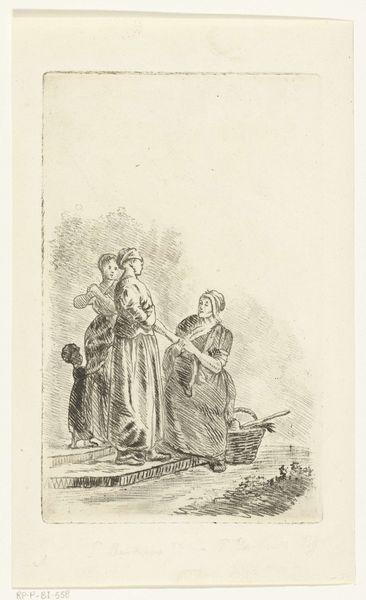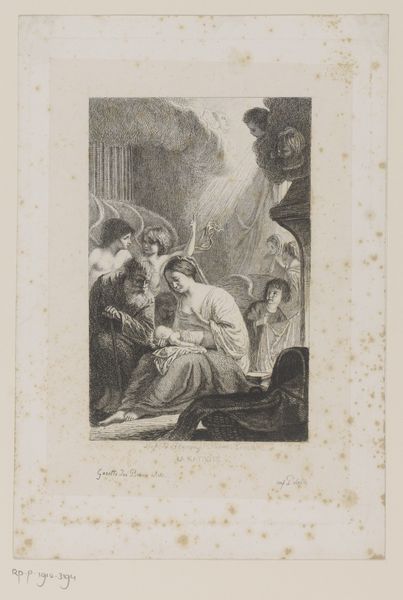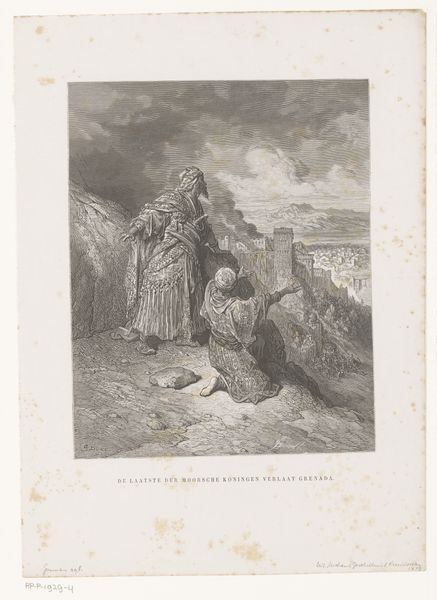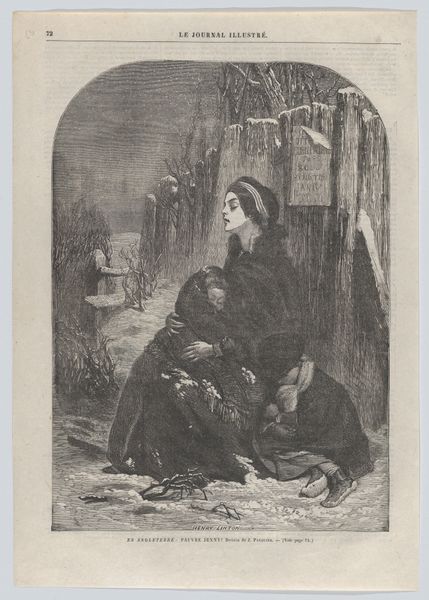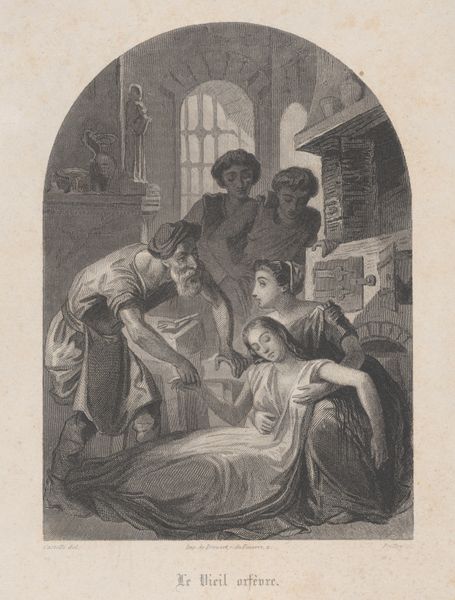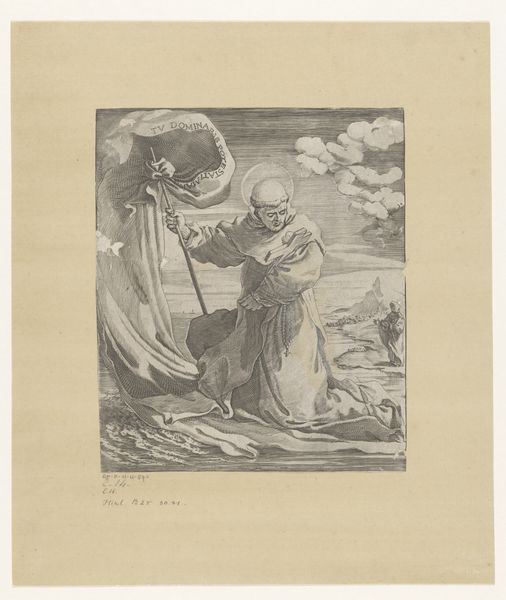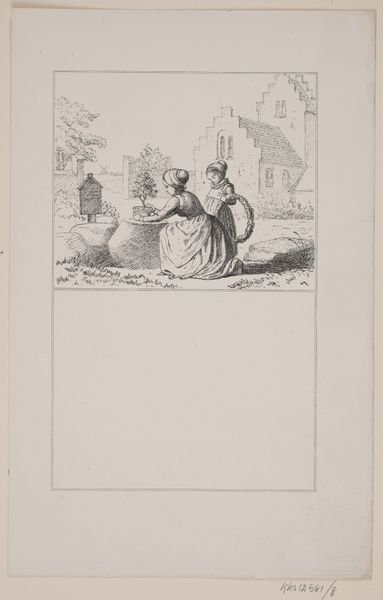
Vrouw met zwaard staat naast een lichaam waarvan het hoofd wordt vastgehouden door een duivelsfiguur 1861
0:00
0:00
adolphealexandredillens
Rijksmuseum
Dimensions: height 183 mm, width 118 mm
Copyright: Rijks Museum: Open Domain
Editor: Here we have Adolphe Alexandre Dillens' 1861 engraving, “Vrouw met zwaard staat naast een lichaam waarvan het hoofd wordt vastgehouden door een duivelsfiguur,” which translates to "Woman with sword stands next to a body whose head is held by a devil figure." The scene is incredibly stark and disturbing. What strikes me is the power dynamic depicted and its allegorical feel; what’s your perspective? Curator: This work plunges us into a historical narrative brimming with complex layers of gender, power, and the grotesque. The woman, armed with a sword, confronts a scene of blatant barbarity executed by a demonic figure, so, let’s think about this for a moment. In what context might a female figure become the arbiter of justice against such overwhelming brutality? Editor: Perhaps it is speaking about the limited agency women have, that the demonic does what women have traditionally been disallowed to do? The way the woman is standing above but still cannot intervene feels deeply unsettling. Curator: Exactly. This piece can be viewed through the lens of feminist theory. We have a figure of female authority juxtaposed with horrific violence, suggesting the historical disempowerment of women even when confronted with blatant injustice. How does Romanticism play into it, considering its emphasis on emotion and individualism? Editor: It intensifies the emotional impact. The artist makes us confront not only the violence itself but also the moral quandary of the female figure’s ambiguous role. I think it gives us a view of both malevolence and restricted feminine capability in times of such gore. Curator: The work allows for such insight, doesn’t it? The historical context of Romanticism allows for reflection on gender roles of that era, allowing viewers to ask critical questions regarding the portrayal of power, gender, and societal complicity within historical narratives. Editor: Absolutely. I leave feeling unsettled yet better informed about the artist's, and maybe the time's, gendered societal interpretations.
Comments
No comments
Be the first to comment and join the conversation on the ultimate creative platform.



